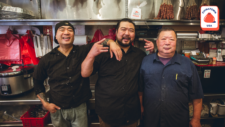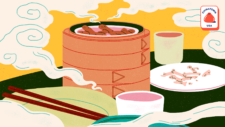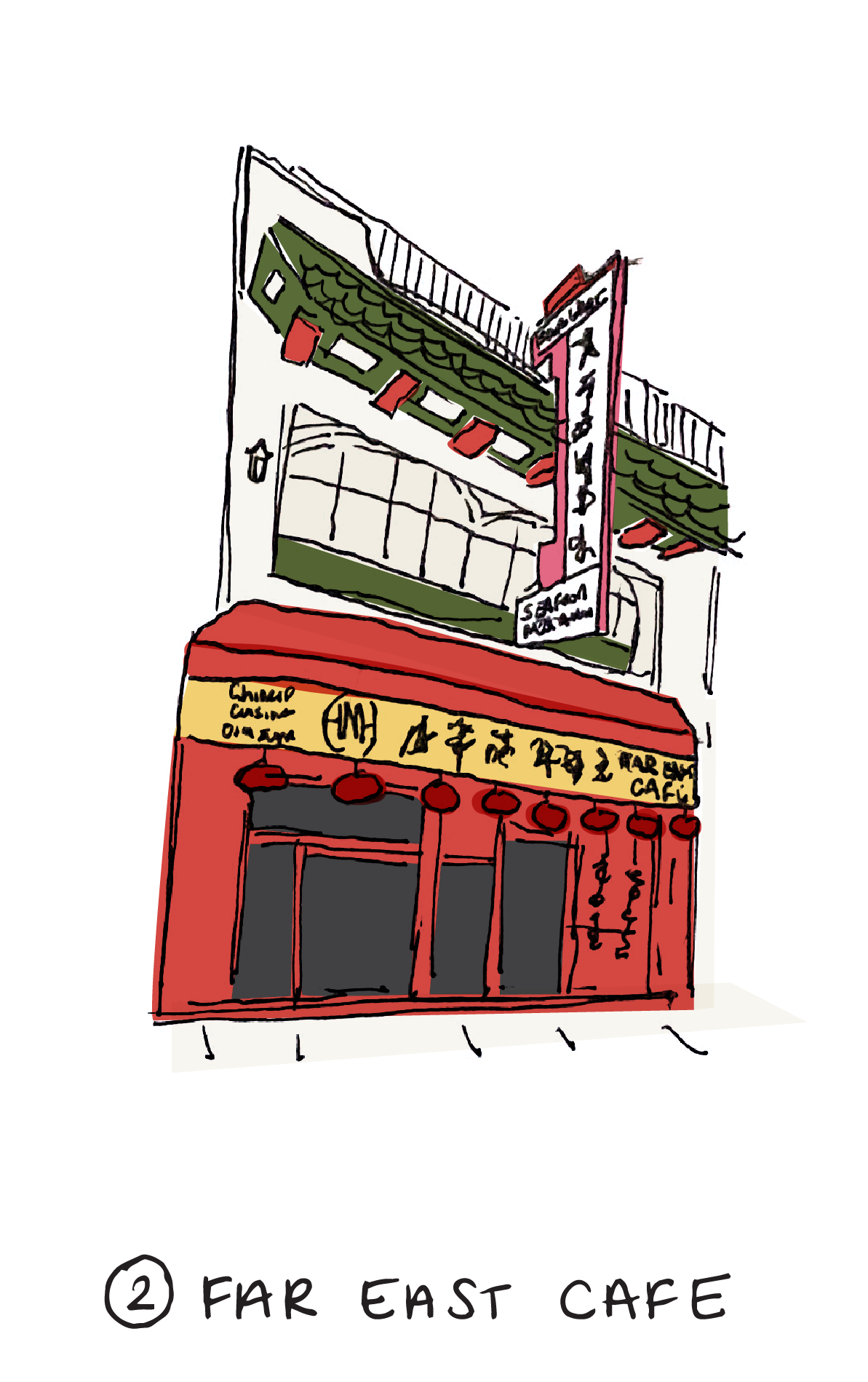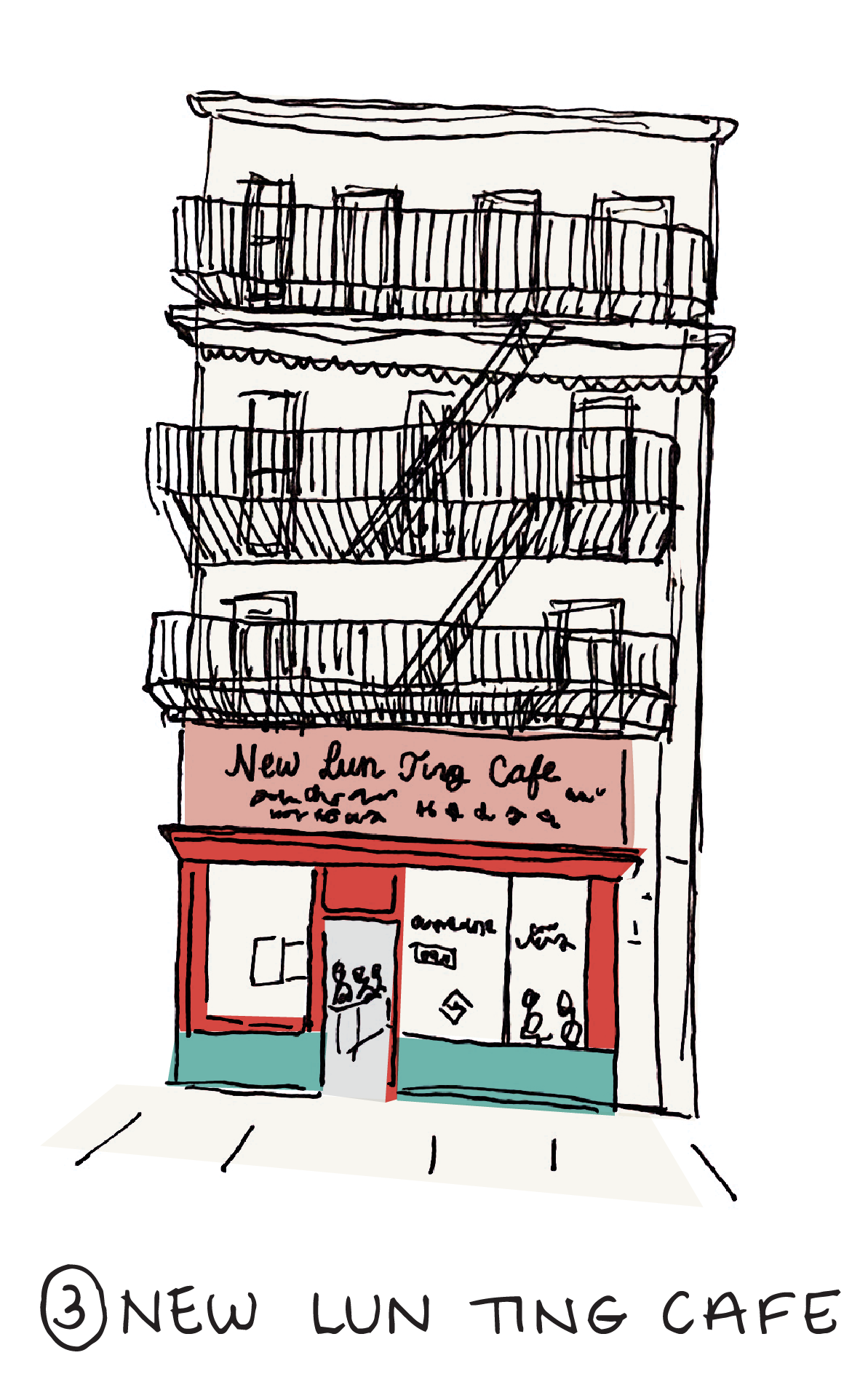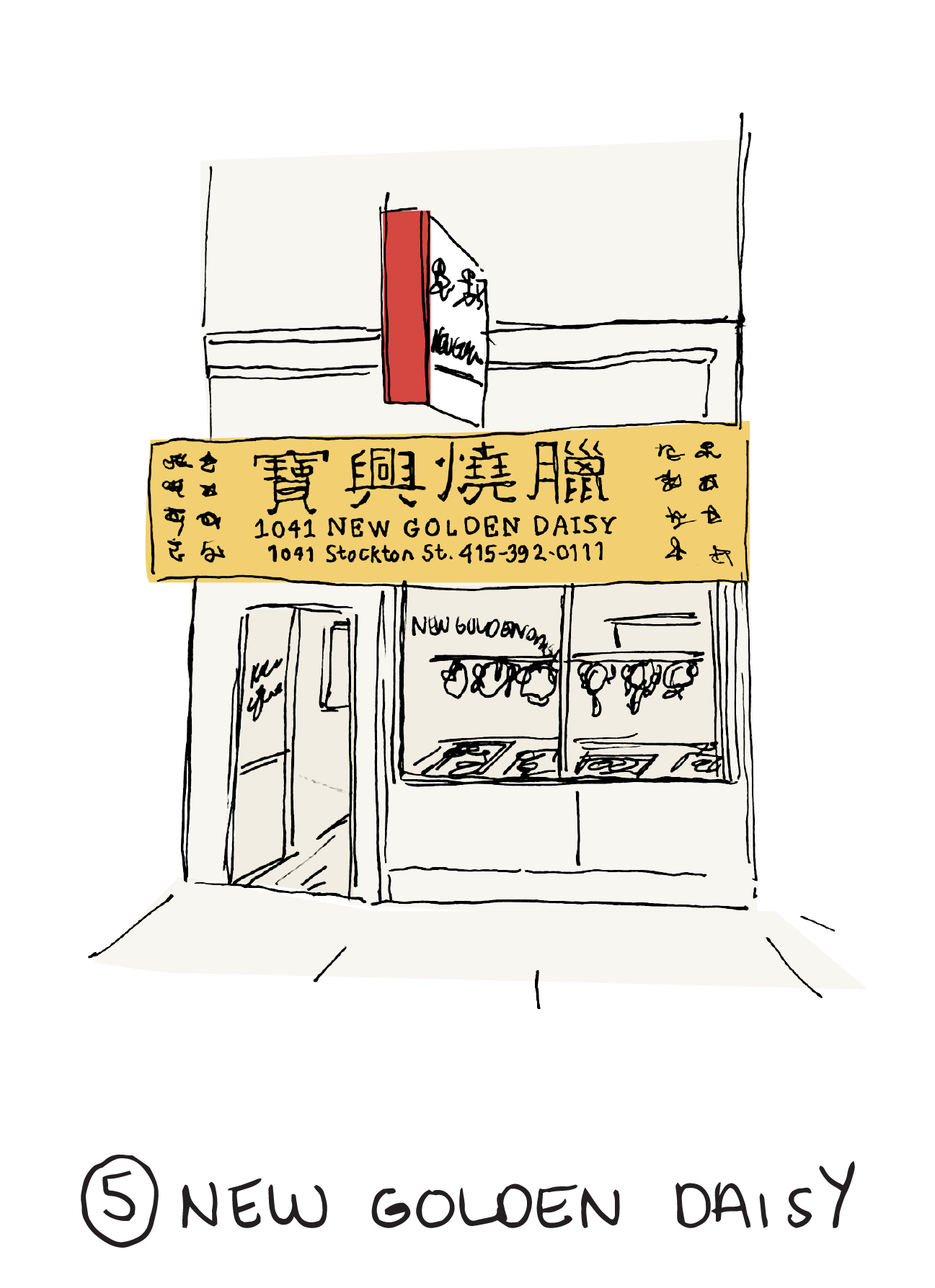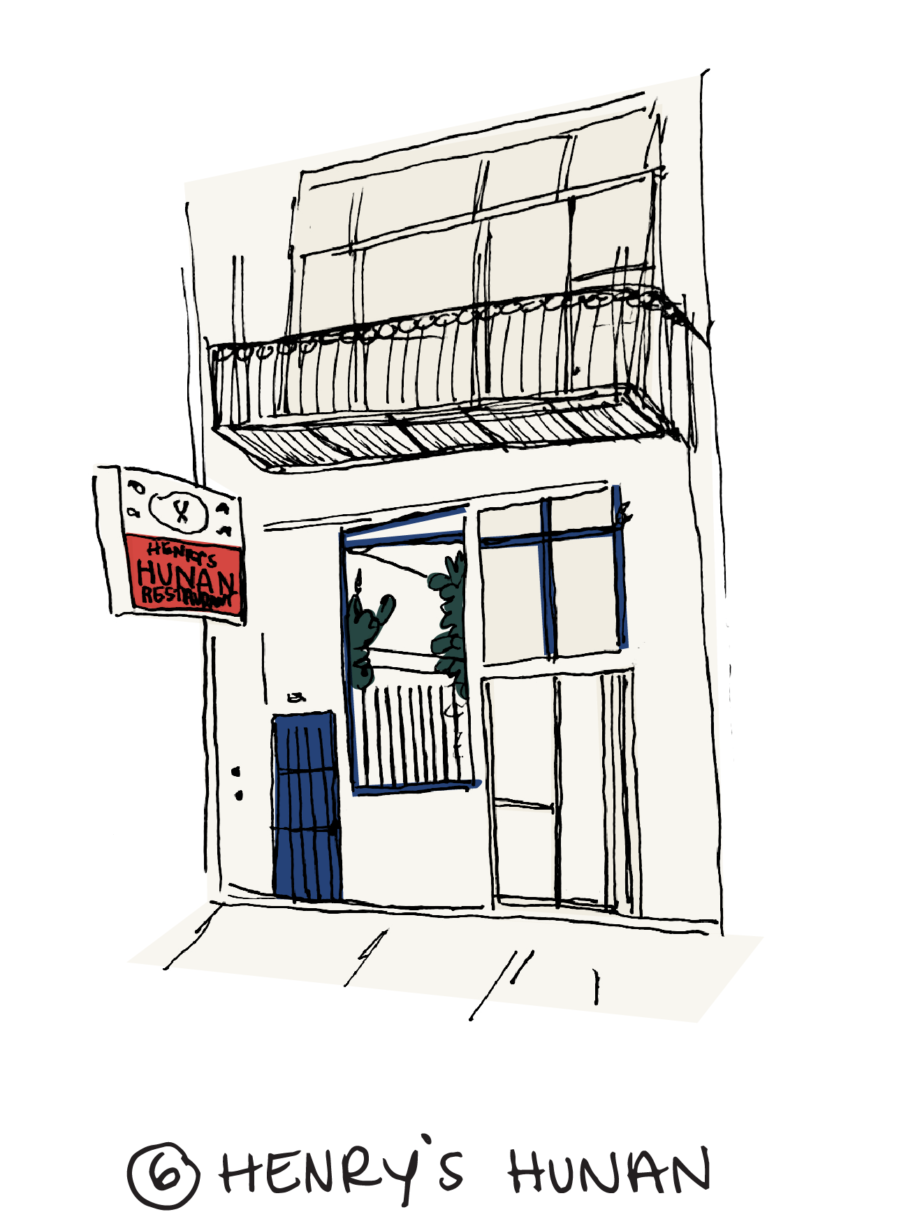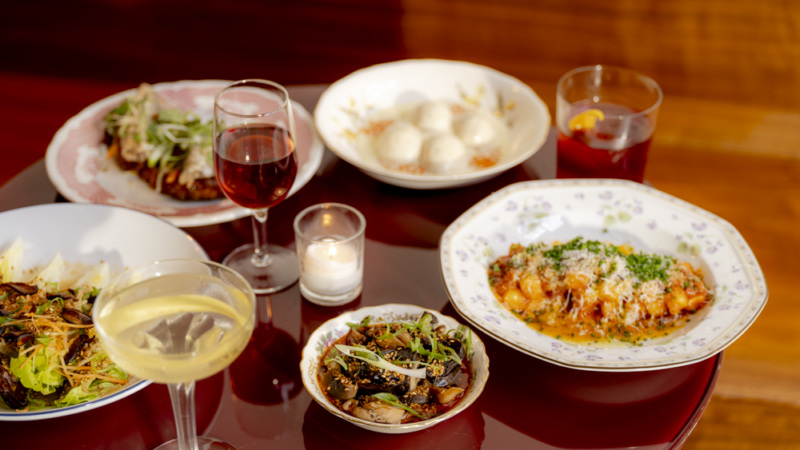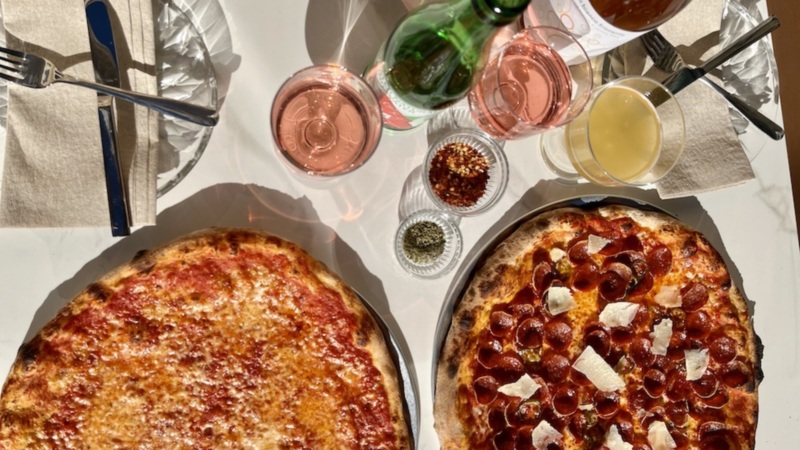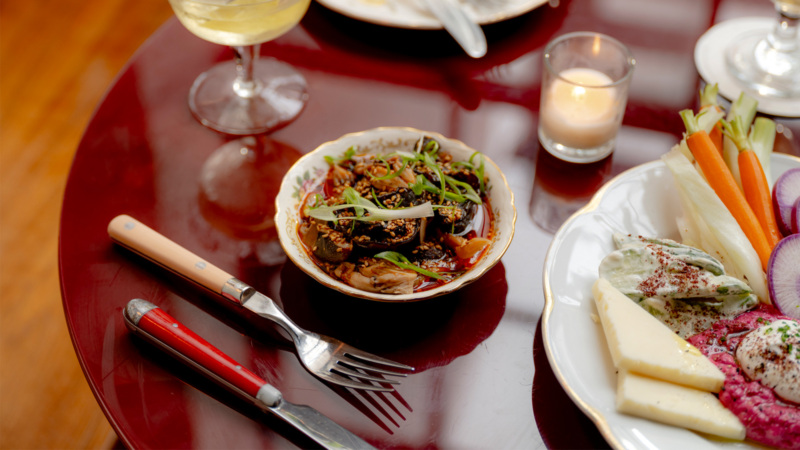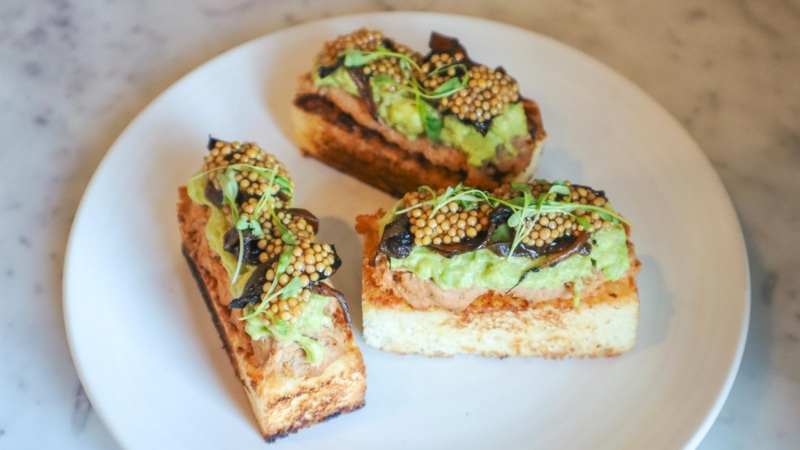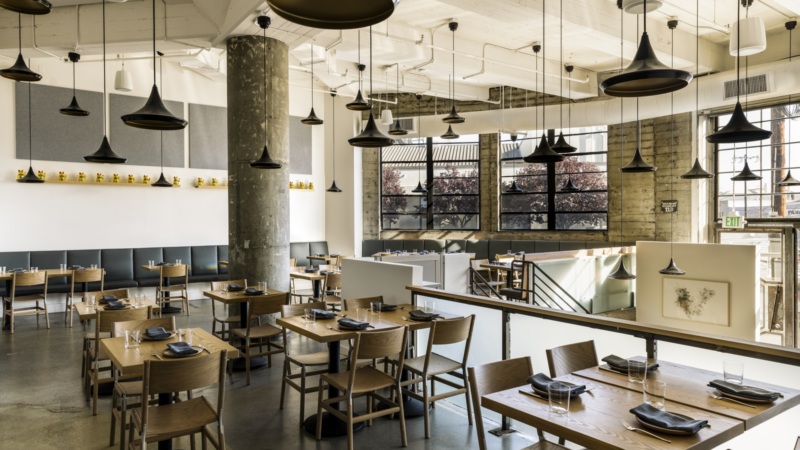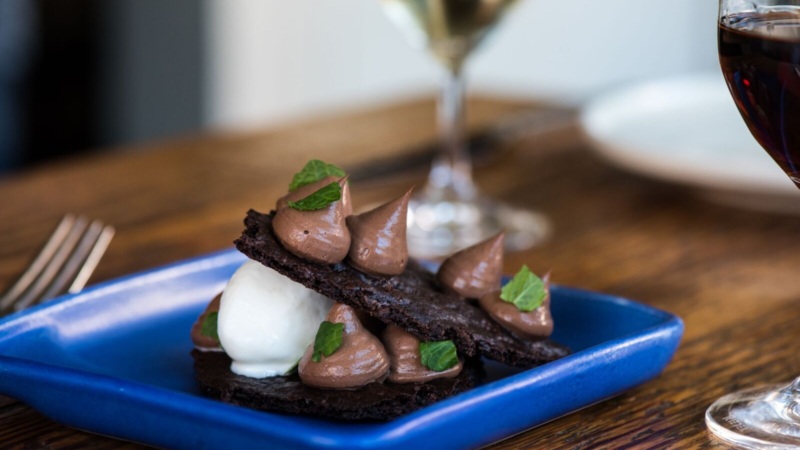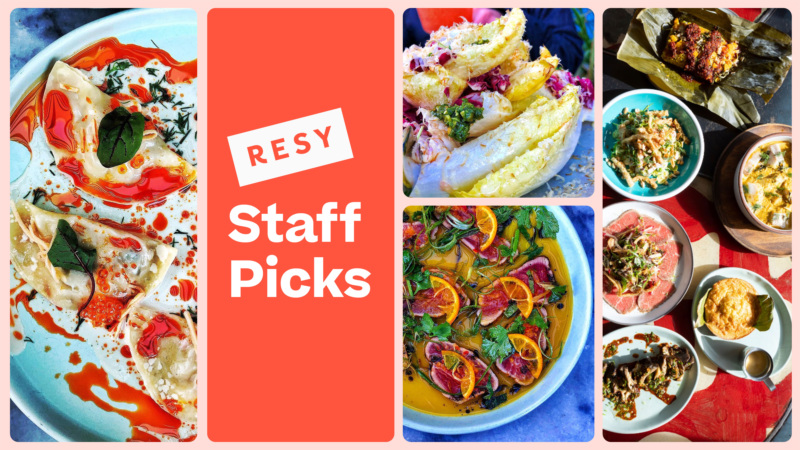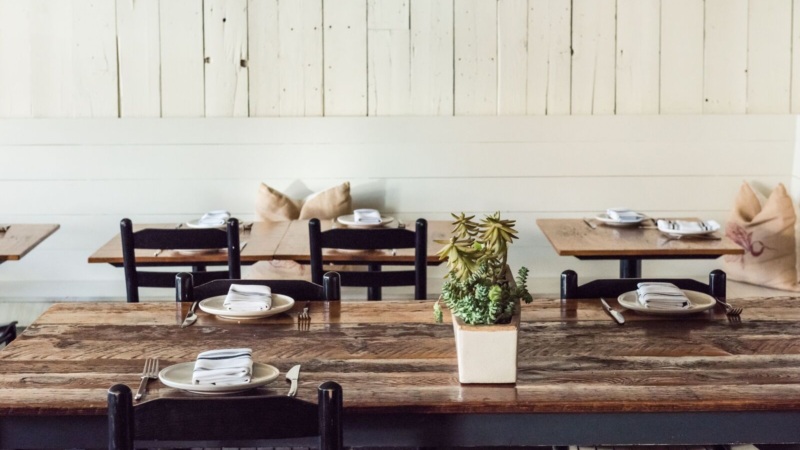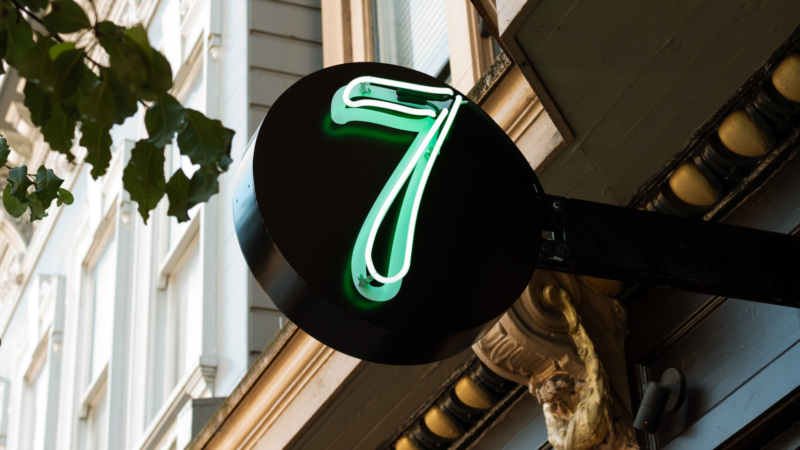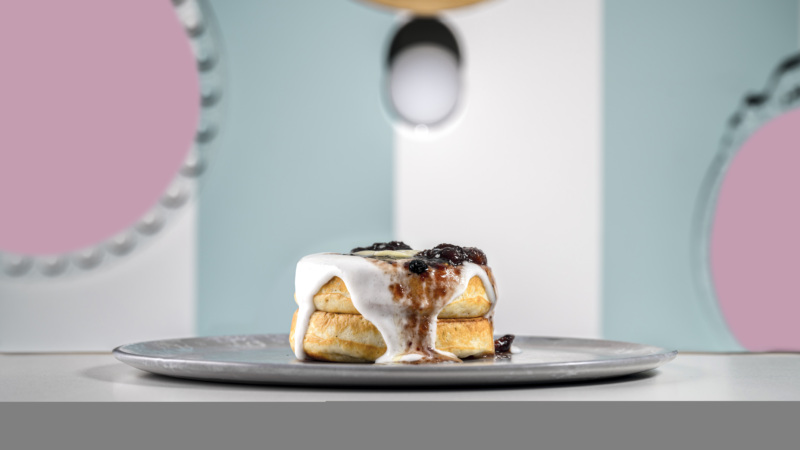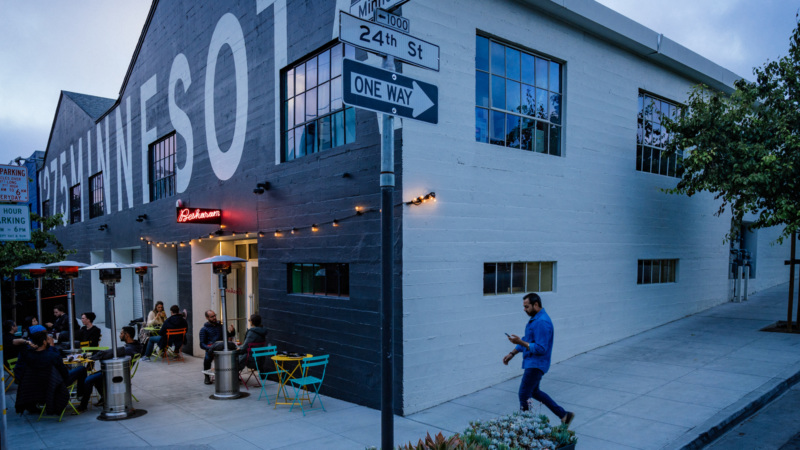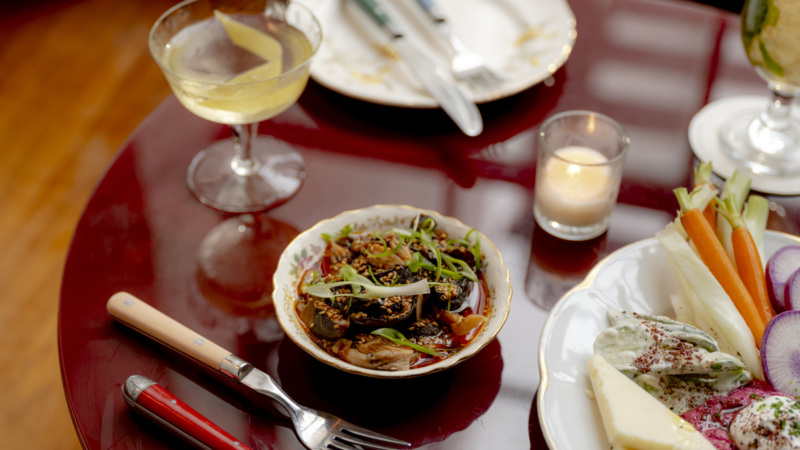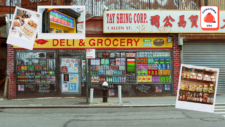
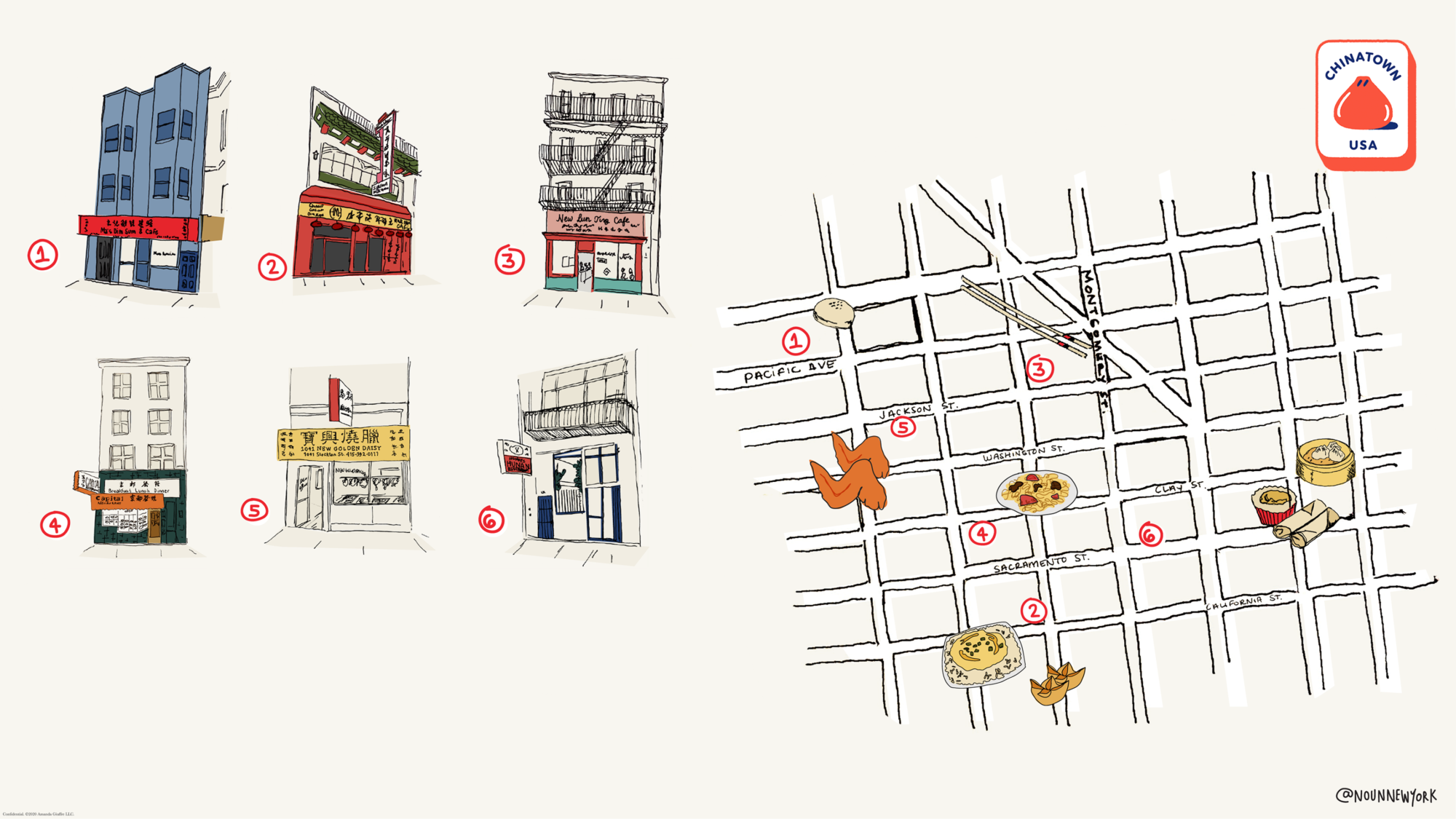
Six Dishes That Tell The Story of San Francisco’s Chinatown
Was the inventor of San Francisco’s famous Hangtown Fry — a scramble of eggs, oysters and bacon — really a gold miner in Placerville celebrating his good fortune with the most expensive meal he could order? Or did the dish actually descend from the Teochew-Cantonese oyster omelet that Chinatown restaurants serve to this day? There’s no documentation to prove either claim, but San Francisco does have a long history of rewriting its legends to erase the Chinese immigrants who built the city alongside Forty-Niners and Mission priests.
Until the mid-1960s, redlining, racial housing covenants, and “sundown towns” (suburbs that forced Chinese, Latinx, and Black people to leave after dark) kept Chinese Americans from moving out of Chinatown—and also fostered a deep sense of community within its blocks. The neighborhood has been at the very center of San Francisco since just a few years after the city’s founding, and for most of that time, it was the gateway for the flow of people, culture, food, and ideas into the United States.
Thus San Francisco Chinatown can make a strong case that it’s the source of the Chinese American cuisine served in thousands of neighborhood restaurants and takeout counters around the country. But the neighborhood also has a local cuisine, dishes preserved or created here. In the decade I covered San Francisco as a food journalist, I often asked the elders who became my neighborhood guides: What are Chinatown’s crab cioppino and Mission burrito, the dishes we should be honoring the way we do those others—and how did they come to be? As someone who moved to the city at age 20 because it was an LGBT mecca, and quickly discovered it was also the most Chinese city in the country, culturally speaking, what would these dishes tell me about being a San Franciscan?
Many dishes that onetime Chinatown kids, now in their 60s and 70s, remember fondly—steamed goose feet wrapped in seaweed, duck stuffed with barley, orange pie—are gone. They’re too cost prohibitive to make, or the taste for them has faded, or cooks who made them famous died without passing the recipe on. But a few of these San Francisco classics remain. Some of them are foods from mainland China that immigration preserved in an archaic form. Others, invented here, tell a story of an evolving neighborhood in a changing city, a complex tale of ingenuity, adaptation, exclusion, cultural porousness, and entrepreneurial hustle.
If you’re walking this route, the stops are arranged chronologically, tracing their points of origin, so it may make you hike up or down the hill one time too many for your tastes. Luckily, Chinatown is compact, and there’s more than enough to restore you along the way.
Dai Bao at Ma’s Dimsum and Cafe
When he first moved to San Francisco in the 1960s, Al Cheng says, you could find dai bao all over Chinatown, and as a young man he’d often grab one of the fist-size buns (dai bao means “big buns”) for lunch. Stuffed with ground pork, lap cheong sausage, egg, and mushroom, the Toisan specialty certainly made a full meal.
You can still find Toisan dishes like dai bao or claypot rice cooked with lap cheong and cured bacon in New York and Los Angeles Chinatown as well as San Francisco’s. That’s because the Sze Yap area of Guandong province began sending young men and women across the Pacific in the 1850s, and Toisan—or Taishan in modern Mandarin—was once as common a dialect as Cantonese in Chinese American communities. (In fact, Mow Lee Shing Kee on Commercial Street has been making lap cheong, cured bacon, and other charcuterie since before the Civil War.)
Cheng, the cofounder of Roots, a 30-year-old organization that leads groups to China to find their family’s ancestral villages, says that dai bao have all but disappeared from Guangdong itself. Born in the Philippines, he also argues that dai bao found one other home abroad: in Manila, where they have evolved into the dumplings known as siopao, introduced to the country by a man who emigrated from the Sze Yap region in 1918. Here, an ever-shrinking number of restaurants and bakeries make the big buns: At Blue Sky Restaurant (1504 Powell St., has been temporarily closed), they’re listed on the top left corner of the menu and kept warm in the steamers, while at Ma’s Dimsum, you’ll find them in the glass case, but you might as well squeeze into a chair while you’re there for claypot rice, too — like everyone else in the room. // 1315 Powell St., 415-788-3532.
Yi Fu Wontons at Far East Cafe
Next, walk south on Stockton, passing the produce markets—Chinese farmers planted small farms around the city starting in the 1850s, by the way, and much of the produce you see still comes from Northern and Central California—to Sacramento St., where you’ll cross over to Grant. Far East Cafe, your destination, has been around since the 1920s, housed in a building quickly constructed just after the 1906 earthquake, when the Chinese Consul, the family associations, and entrepreneurs banded together to prevent a racist scheme to force Chinatown out of its prime downtown real estate to the outskirts of town by rebuilding the neighborhood to look like a Sino-American architectural fantasy. The restaurant’s opulent interior and wood-paneled booths make Far East one of the neighborhood’s most romantic restaurants, and its upstairs banquet room is one of Chinatown’s last.
Located on a section of Grant Street where cars constantly dodge tourists who dart into the road to take selfies, Far East Cafe has kept its menu a blend of Cantonese classics and Chinese American staples since its opening. According to owner Bill Lee, its egg foo yung recipe dates back to the 1920s. So does its Yi Fu Wonton: a glossy, thick seafood soup topped with deep-fried pork-and-shrimp wontons.
Lee says that Yi Fu Wonton are also an old-fashioned Cantonese dish that you can still find in Guangdong province but rarely see in restaurants outside the Bay Area. Some restaurants here make theirs with duck broth and meat. At Lee’s, the cooks make stock from a blend of chicken, pork, dried shrimp and beef, add chopped shrimp and scallops, and then swirl in egg whites to thicken the broth so the fried wontons float, retaining their crispness while soaking up the flavor. It’s a dish too rich to list with the rest of the soups on the menu — and one whose careful construction is only appreciated by its fans. // 631 Grant Ave., fareastcafesf.com.
Roasted Pork (sort of) at New Lun Ting Cafe
Next, walk three and a half blocks up Grant, taking in the brightly colored eaves and curled rooftops that saved the neighborhood a century before, and turn right on Jackson to find the unassuming New Lun Ting Cafe. If you grew up in Chinatown, you probably call New Lun Ting “Pork Chop House.” And it does still serve a pork chop—braised pork, actually, smothered in brown gravy, served with a scoop of white rice. But the importance of Frances Mah’s restaurant, with its curved countertop and uncomfortable booths, is more than its signature dish.
“To me, it was always a bachelor restaurant,” says artist Leland LW Wong, who heads a Facebook group called I Grew Up in San Francisco Chinatown. “It remains that today, even though that bachelor society that was so much a part of Chinatown has died off.”
From the 1850s on, so many of the men who came to California in search of work left families back in China, living alone in residence hotels and taking their meals in restaurants. And for more than 60 years, the U.S. government enforced their solitude, trying to force them to leave. The federal Page Law of 1875 banned women from emigrating from Asia, supposedly to prevent prostitution, and the Chinese Exclusion Act of 1882 strangled immigration from China and denied citizenship to longstanding residents. The government kept the act in place until 1943, even as Europeans flooded into the United States.
New Lun Ting’s pork chop is a remnant of those decades, when white San Francisco made it unpleasant for Asian San Francisco to dine outside Chinatown. So dozens of diners and coffee shops sprung up in the neighborhood to cater to locals. Single men could sit on a stool at the counter and order homey dishes like beef with bitter melon served in single servings over rice, or big cuts of meat like pork chops or braised oxtails. Chinatown also had a pie culture at one time, too, Wong says; favorites were the apple and orange pie at Sun Wah Kue and Pork Chop House’s custard apple. Until just a few years ago, New Lun Ting ended each meal with a square of Jell-O.
Candidly, the roast pork, in all its gloopiness, might be a dish you should order for history’s sake; insiders whisper that you might be happier with bacon fried rice or the cheeseburger. And in the days surrounding Lunar New Year, they add, Mah makes the neighborhood’s best Toisan-style tang yuen, rice-flour dumplings stuffed with dried shrimp and mushrooms. //670 Jackson St., 415-362-5667.
Tomato Beef Chow Mein with Curry Powder at Capital Restaurant
Back to Grant and two blocks south, then right on Clay and uphill a half-block to Capital, one of the most charming homestyle restaurants in the neighborhood, and a longtime haunt of local politicos. I’ve always ordered homestyle Cantonese dishes off the pictures on the wall, but Frank Jang, a culinary tour guide with Wok Wiz and a member of the Association of Chinese Cooking Teachers, says it’s also the best place in town for tomato beef chow mein, Chinatown style.
Chow mein may have been one of the first Chinese American dishes that white and Black Americans fell in love with. Even at the height of the Chinese Exclusion Act, “chop suey joints” proliferated in cities large and small. “By the 1920s, chop suey and chow mein had claimed a place in the national diet alongside ham and eggs, coffee and a slice of pie, and the Sunday pot roast,” Christopher Coe writes in Chop Suey, his history of Chinese cooking in America.
No one knows when San Franciscans started stir-frying noodles with tomatoes and beef—the tomatoes, the beef, the sweet-tangy sauce that bad versions adulterate with ketchup, all mark the dish as an American original—nor when it became an insider move to add a dash of curry powder. Jang says he thinks the source of the dish was kids who left Chinatown to join the army or go to school, and returned with a love for mixed flavors.
Chinatown kids from multiple generations have told me this is the dish they remember loving as kids, the off-menu tweak that marked it as their own. In the 1960s and 1970s, the place to get tomato beef chow mein with curry powder was Jackson Cafe, which closed decades ago. Now, Jang only trusts Capital owner Samantha Lo to make it without shortcuts. “Many of the other restaurants can wing it, but they don’t know how to do it right.” // 839 Clay St., 415-397-6269.
Chicken Drummettes at New Golden Daisy
Back up the hill to Stockton, turn right, and thread your way north through the shoppers until you approach Broadway, and the newest take on San Francisco’s 75-year-long love for Chinese American fried chicken.
As far as anyone knows, Joe Jung was the chef who introduced fried chicken to Chinatown. During World War II, Jung cooked at Zombie Kitchen in Oakland—a tiki restaurant owned by “Trader” Vic Bergeron. There, Black coworkers taught him to cook Southern staples like fried chicken, biscuits, and gravy. When Jung opened up his own restaurant in 1945, he designed the place to make Asian American diners feel comfortable ordering Chinese and American dishes alongside each other, and on its menu was his personal take on fried chicken. “It was the best fried chicken ever in San Francisco,” Al Cheng says, unhesitatingly.
“People would even stop him on the street to beseech him for the secret of his fried chicken batter,” Jung’s son David told the San Francisco Chronicle in 1998 after his father died. Jung never let it slip—not even to his staff.
Jung may have inspired the five-spice-scented fried chicken legs that Kwong Shing Market in the Richmond used to serve, as well as the Pacific Court diner’s wildly popular soy-marinated fried chicken. But all three places have since closed.
Now, Cheng stops in New Golden Daisy for a bucket of the butcher shop’s ginger-marinated chicken drummettes, which are dredged in rice flour before frying, forming a pale, lacy shell. The drummettes are halfway between a snack and a full dinner, and if you were to stick a box in your backpack, they’d stay crisp all the way home. // 1041 Stockton St., 415-392-0111.
Diana’s Meat Pie Special at Henry’s Hunan
If we’re all lucky, the Sacramento Street location of Henry’s will have reopened by the time you’re conducting this tour. Otherwise, you’ll have to save this dish for your next visit to the locations on Church Street or Mission Street. Unlike the other dishes in this tour, as well, we know the exact origins of the Diana’s Meat Pie Special at Henry’s Hunan. There was a Diana, after all, and she did concoct the dish. And with one thought in mind, says her son Howard Chung: competitiveness.
In 1974, when Henry and Diana Chung opened the first Henry’s Hunan in Chinatown, they gave up the first steady job Henry had found after emigrating to the United States in 1948 as a diplomat representing China’s Nationalist Party. (Right after they got here, the party fled to Taiwan escaping the Communist armies, but neither of the Chungs wanted to follow them.) Diana, however, convinced her husband to quit his cush position with China Airlines in order to open a restaurant where she could serve the Hunanese food they grew up with and hang out with her friends.
At the time, Cantonese food dominated the neighborhood. Even though the Immigration and Nationality Act of 1965 had removed racist quotas and opened America to immigrants from Asian and African countries, most Chinese-speaking immigrants were still coming from Hong Kong or Taiwan, not Hunan. The restaurant’s house-smoked meats and spicy, garlicky flavors were a novelty for Chinatown residents and non-Chinese San Franciscans alike. Henry’s Hunan became an institution, and through the work of the Chungs and their children, a city-wide chain.
By the early 1980s, Henry and their son Marty had named Chinese American dishes they’d invented after themselves, and both the Henry’s Special and Marty’s Special were favorites with diners. Diana, who’d been a star track and volleyball athlete in her youth, wanted her own eponymous special. In fact, says Howard, she was determined it should be even more popular than theirs, even though she wasn’t one of the restaurant’s primary cooks.
She took a crisp-edged onion cake, slathered it in the ground-pork sauce used for zha jiang mian, added a handful of crisp lettuce and hefty shakes from a can of Parmesan cheese, and finished it off with another onion cake, making a sort of Hunanese-American sloppy joe. Did this new San Francisco classic reflect her personal tastes or was it a cynical play for Americans’ affections? Howard couldn’t say. What he does know is that Diana won. // 674 Sacramento St., 415-788-2234. (Other locations throughout S.F.)
Jonathan Kauffman is a James Beard Award-winning food journalist, a former San Francisco Chronicle reporter, and the author of Hippie Food, a history of the 1970s natural-foods movement. Follow him on Twitter. Follow Resy, too.


